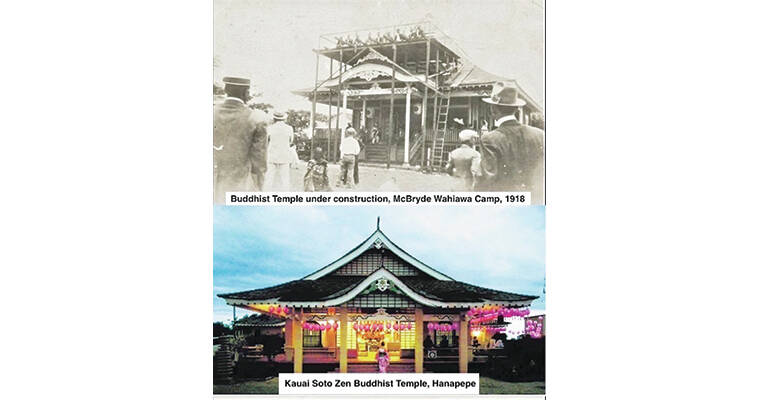The origins of Kaua‘i’s Soto Zen Buddhist Temple date back to McBryde Sugar Co.’s Wahiawa Camp in 1903, the year the Rev. Ryoun Kan arrived there to begin preaching Soto Zen Buddhism in Tsuneo Takai’s home.
A year later, Rev. Kan was preaching in a newly erected combination church — Japanese language school.
In 1918, a Buddhist temple and a minister’s residence were built at Wahiawa Camp.
Since only a few residents remained at Wahiawa Camp by the 1970s, a new temple, a hall and a minister’s residence were built by church members in Hanapepe in 1978.
The original temple at Wahiawa Camp was demolished in the 1980s.
One of the largest yearly Obon festivals on Kaua‘i is hosted by the Soto Zen Temple.
Gerald Hirata, the president of the temple, has explained that, “Obon is a time to remember your departed loved ones at the family altar at home, and by giving offerings of food as if the family ancestral spirits were there, so as to feast and celebrate together.
“During Obon, we express our heartfelt gratitude to our departed loved ones. By lighting a candle and offering incense, we honor and extend our hospitality to our visiting ancestral spirits during Obon.
“Obon is also a time when people can dance in the ring with the spirits of ancestors and all of the loved ones who have departed. It is a happy time of remembrance and a good time to celebrate life itself.”
During the Obon festival, guests are allowed to ring the Bonsho, the large bell in the Bell Tower on the grounds of the temple, in memory of their loved ones.
Also, the Bodhi tree on the temple grounds may be a descendant of the tree at Bodh Gaya, India, under which Buddha sat meditating and became awakened, or enlightened.
Of interest, also, is the Kannon World Peace Statue, dedicated in 1991, that stands beside the temple.
Kannon is the Japanese Goddess of Mercy and Compassion – a Bodhisattva – a revered Buddhist figure on the path to enlightenment, perhaps the most widely worshiped Bodhisattva in Japan.





